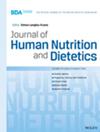The impact of an enteral formula with food-derived ingredients on dietetic practice at a specialist children's hospital in the UK: Retrospective study
Abstract
Background
Blended tube feeds are reported to be better tolerated in some children compared to standard commercial enteral formulas, allowing children to normalise feeding by having similar foods as the rest of the family. However, a blended tube feed is contraindicated in patients who are immunocompromised or require post-pyloric feeding as a result of a food safety risk. Other contraindications for blended diet include children who require continuous pump feeding via gastrostomy or nasogastric feeding tube (< 12 Fr) and fluid restrictions. To meet the demands of consumers, manufacturers have developed enteral formulas with food-derived ingredients (EFI). Commercially available EFIs are relatively novel in the UK. The present study aimed to monitor the implementation of an EFI by dietitians in a specialist children's hospital.
Methods
A single-centre retrospective study was conducted to monitor the dietetic practice of commencing a commercially available EFI (Compleat® paediatric; Nestlé Health Science; 1.2 kcal/ml with 14% food-derived ingredients). Using electronic medical notes, data were collected on all children who commenced an EFI via an enteral feeding tube in a specialist paediatric hospital between August 2022 and December 2023. Data were gathered on demographics (age, sex and primary diagnosis), anthropometric measurements (weight-for-age Z-score and height-for-age Z-score), feed regimens (feed volume, feeding route, mode of feeding [continuous, bolus]), gastrointestinal symptoms (gastro-oesophageal reflux, vomiting, abdominal discomfort, constipation and loose stools) and geographical discharge area for children on home enteral nutrition.
Results
Seventy children were included in the analysis. The mean ± SD age was 4.7 ± 6 years. The median admission weight-for-age Z-score was −1.50. The most common primary diagnosis was a neurological impairment in 37/70 (47%) children. Most children were fed via a percutaneous endoscopic gastrostomy 31/70 (44%) and 8/70 (11%) of the children fed directly into the jejunum. The most common reason being gastrointestinal symptoms, 58/70 (83%). The most common gastrointestinal symptom reported before commencing an EFI was loose stools in 22/58 (38%) children. Within 7 days of commencing an EFI, there was reported improvement in gastrointestinal symptoms in all categories. In total, 42/70 children were discharged on an EFI.
Conclusions
In our specialist children's hospital, EFI is primarily implemented by dietitians in children who are already established on an enteral formula displaying gastrointestinal symptoms. However, dietitians are increasingly implementing an EFI as their first-line whole protein enteral formula. Furthermore, an EFI was also implemented as a compromise to a blended diet.

 求助内容:
求助内容: 应助结果提醒方式:
应助结果提醒方式:


